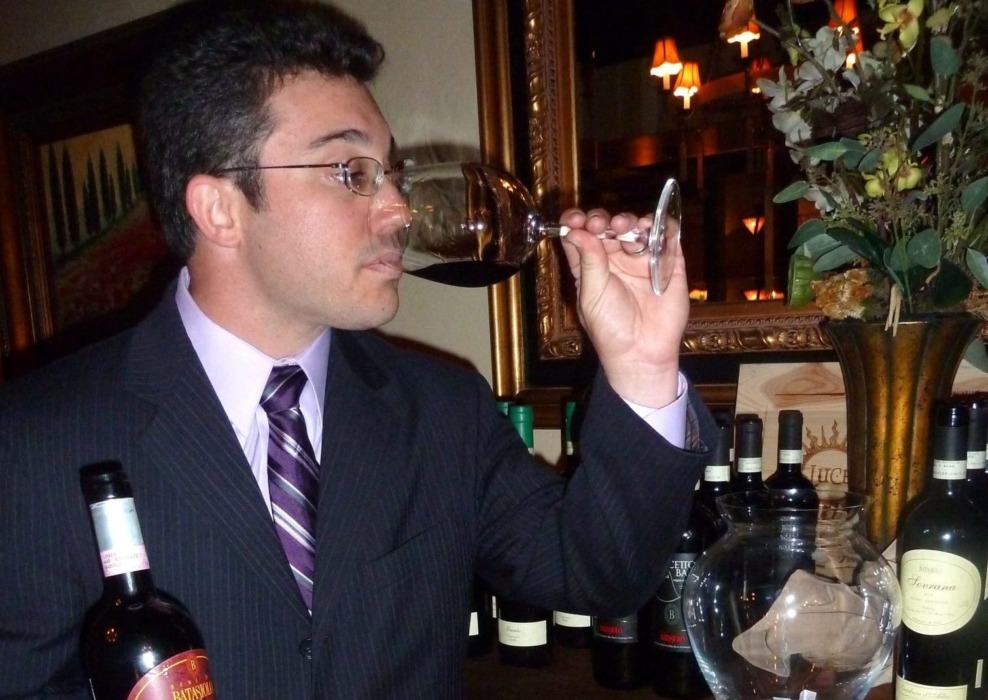Rico Cassoni shares how to elevate your celebration through wine tasting


Last week, I got to thumb through my earlier wine columns from some years ago. The wine world has changed so much since those halcyon days when life was a little calmer, prosperous and most of the wine we reported on was Cabernet and Chardonnay.
But what hasn’t changed and what I focused on in those columns is that wine is a celebration of life and it makes sense to know how to celebrate to get the most out of it.
Pour about a third of a glass of your favorite red and stay with me as I take you through the basics of elevating your celebration, with a review of the five S’s.
SIGHT: The first thing that happens in this five-part harmony in the romance of wine is the sight of the wine. Wine should be poured into a clear tulip-shaped glass with a long stem to grip. The color will vary from a deep red approaching black, in wines like Cabernet Sauvignon and Syrah, from France and California, and the Nebbiolo grape, found in Barolo and Barbaresco in Italy. The sight of brick red might be a Pinot Noir, Merlot or a Sangiovese and other lighter red-colored wine.
You are also scanning for any foreign objects in the wine that would compromise the flavor. It could be cork fragments, even tiny sticks or other impurities from the crush of the grapes prior to barreling.
SWIRL: Swirling, the second of the five S’s, is done to prepare the nose for this step as it aerates the wine, allowing oxygen to mix with the wine to create a perfumed smell and flavor. When swirling, hold the glass firmly vertical by the stem, never by the glass to avoid warming, and briskly move it in a circular motion.
“Legs,” or “tears,” may be seen running down the inside of the glass after the swirl. These result from higher levels of alcohol and sugar and hint at the wine’s power. On my trips to meet Italian winemakers in Italy, I always got a laugh out of the vigorous swirling of their wines while expressing themselves, concluding it was just a nervous habit. Not at all! They were simply seeking the maximum “bouquet,” a combination of smell and taste.
SMELL: The smell of a wine is its “bouquet.” It’s a fitting description, like the best flowers bundled up into a bouquet as a gift for a loved one. Another expression would be the “nose” of the wine. The human nose can distinguish thousands of unique smells. Wines have over 200 of their own. So get your nose down in the glass as close to the wine as possible. Take deep, short, sharp inhalations and try to detect smells such as flowers, fruit, herbs, oak, coffee and licorice. Younger reds will smell fruity, old wines will smell more earthy.
SIP: The sip or taste of the wine is indeed the most enjoyable of this five-part harmony. With the smell still lingering in the nose, place the glass to your lips and take in a healthy mouthful. Work it around your mouth, but make sure it’s not so much that you have to swallow right away. Keep the wine-making contact with your palate and tongue with an awareness of the flavors it presents, as well as body, and acidity that will come from the tannins in the wine, essential for maturity.
SAVOR: The last is the finish, or savor. In the swallow/savor, be aware of how long the taste lasts in your mouth. Great wines have a long finish that last as long as a minute. It should leave a very pleasant aftertaste. It is your final impression of a wine and should reflect its excellent quality and taste.
With over 30 years of communication skills, including broadcast, copy, press relations & strategic marketing support in retail, financial and civic, Frank Mangio, is Owner of Taste Of Wine, a multi-media information and commentary column and internet platform, since 2005.
